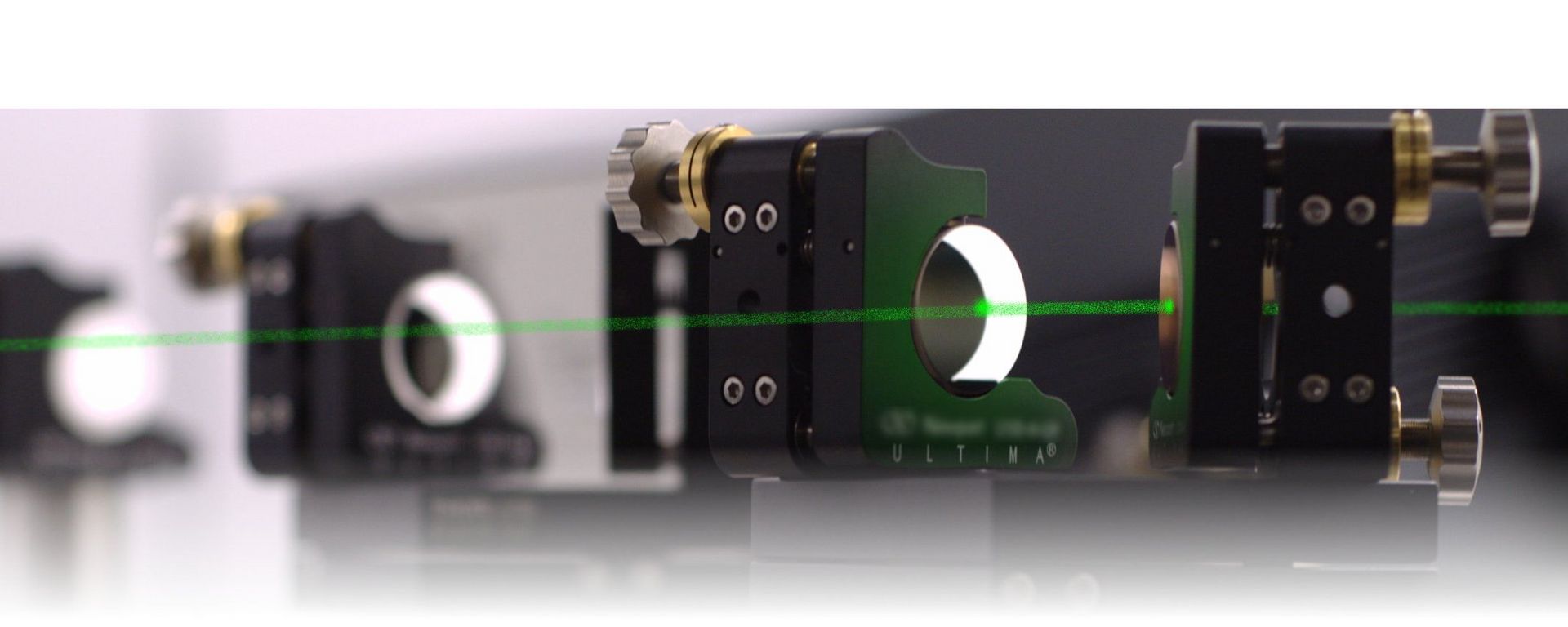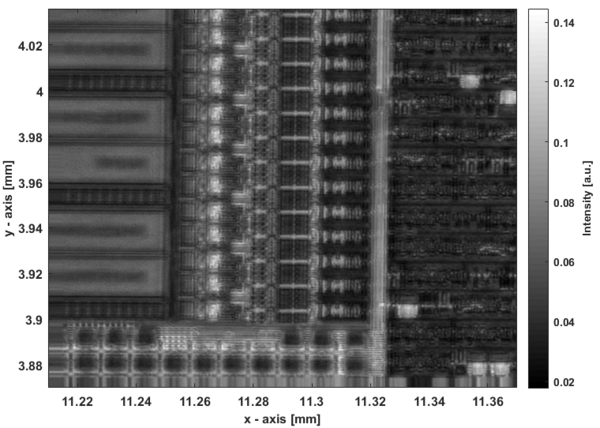A microscope is a typical tool to analyze tiny structures. Widely used in science and industry, microscopy is important in research of typically small modern devices and objects. Because of the ongoing miniaturization of semiconductor and mechanical devices, the need for high resolution microscopes is still growing. It is our aim to improve known microscopy techniques and research new ones.
We realized a flexible confocal laser scanning microscope (CLSM) to analyze semiconductor materials in reflection and in micro-photoluminescence mode. The capability to quickly change the laser sources, objectives and filters allows a wide range of experiments with different kinds of samples. Current projects implement phase based methods to improve the axial resolution, using synergy effects of the research projects in the field of holography and optical coherence tomography (OCT). Using various combinations of pinhole, objective and light source, the following specifications can be archived:
- 250nm lateral resolutions
- 50nm up to 100µm axial resolution
- Laser sources: Diode lasers (405nm, 660nm and 1064nm), HeNe Laser and Ti:Sa Laser (700nm to 900nm)
Furthermore, a contrast enhancement method was developed which enables also high quality imaging of structures with a low height and low contrast [1].
In the last years, we were able to improve the multimodal imaging of buried structures and thus can for example measure the integrated circuits of a microcontroller (see Figure 4). In addition to the reflection information of the confocal microscope, optical beam induced current (OBIC) can be used as a complementing contrast mechanism. In OBIC a laser induces carriers in semiconductor material which can be measured as a current [2,3].
An important subject is the analysis of semiconductor materials, especially the III/V semiconductors for optical integrated circuits. The micro-photoluminescence mode allows spectral imaging in the range of 400nm to 1700nm.

References:
- [1] Lena Schnitzler, Markus Finkeldey, Martin R. Hofmann, Nils C. Gerhardt. "Contrast enhancement for topographic imaging in confocal laser scanning microscopy." Applied Sciences 9(15) (2019): 3086.[1] Lena Schnitzler, Markus Finkeldey, Martin R. Hofmann, Nils C. Gerhardt. "Contrast enhancement for topographic imaging in confocal laser scanning microscopy." Applied Sciences 9(15) (2019): 3086.
- [2] Markus Finkeldey, Lena Göring, Falk Schellenberg, Carsten Brenner, Nils C. Gerhardt, Martin R. Hofmann. "Multimodal backside imaging of a microcontroller using confocal laser scanning and optical-beam-induced current imaging." Proc. SPIE. 10110, Photonic Instrumentation Engineering IV, 101101F. (February 20, 2017).
- [3] Lena Göring, Markus Finkeldey, Falk Schellenberg, Carsten Brenner, Martin R. Hofmann, Nils C. Gerhardt. "Optical metrology for the investigation of buried technical structures." tm-Technisches Messen 85(2) (2018): 104-110.
Further References:
- Webb, Robert H. "Confocal optical microscopy." Reports on Progress in Physics 59.3 (1996): 427.
- Koukourakis, Nektarios, et al. "Axial scanning in confocal microscopy employing adaptive lenses (CAL)." Optics express 22.5 (2014): 6025-6039.
Colleagues:



